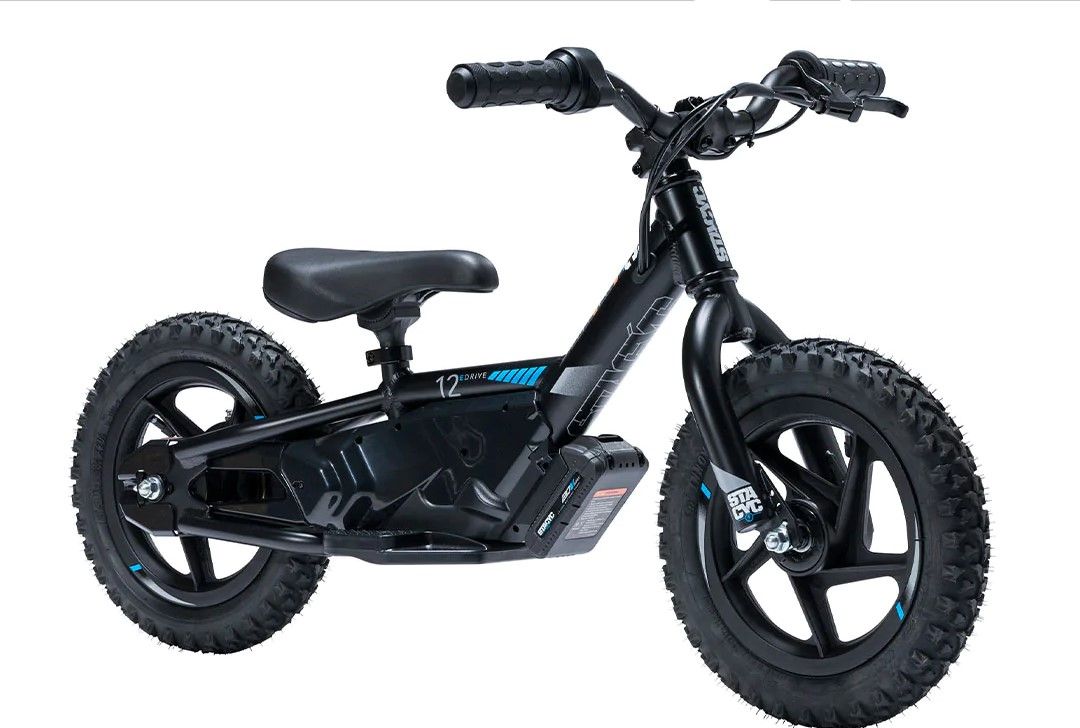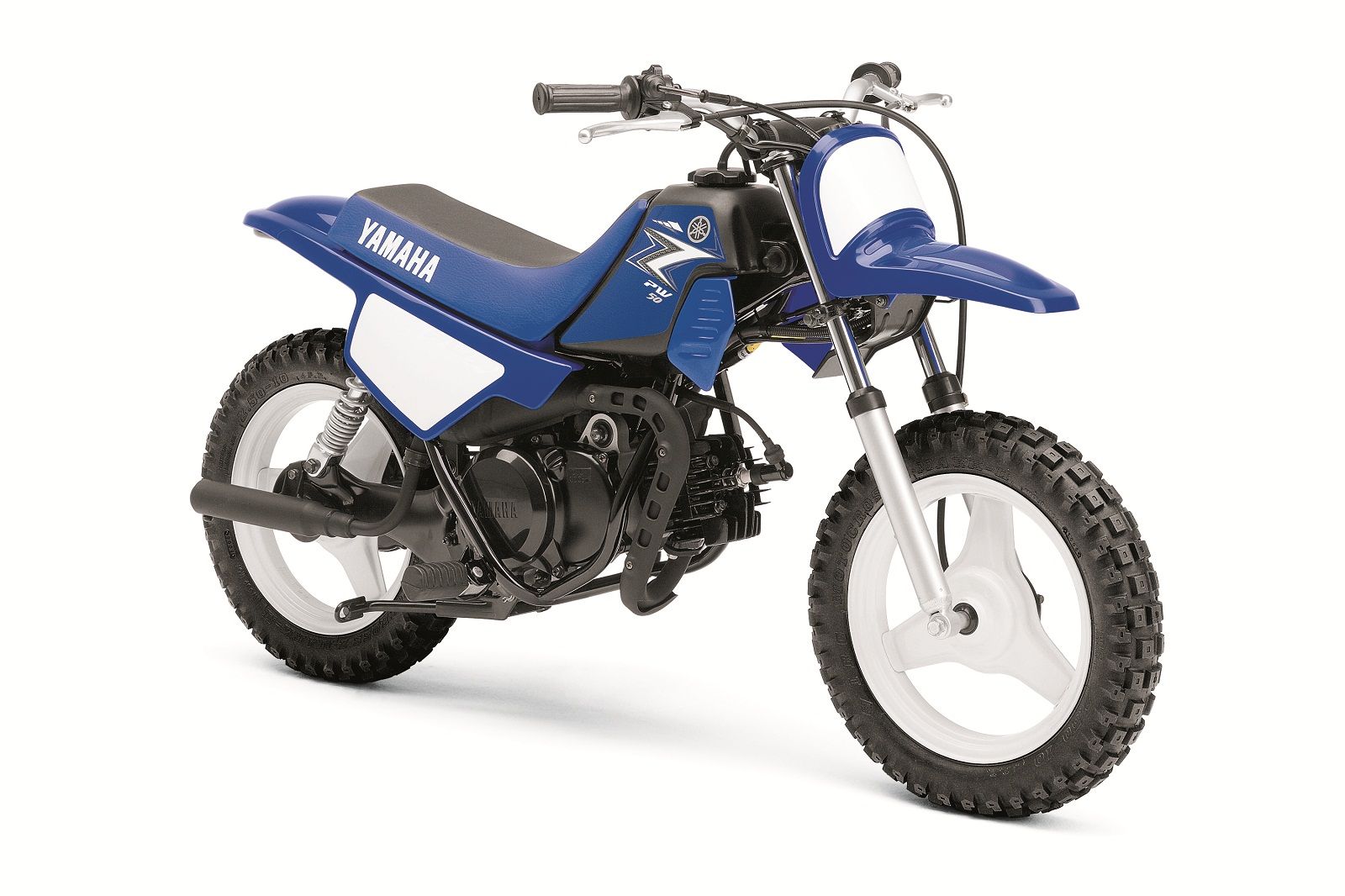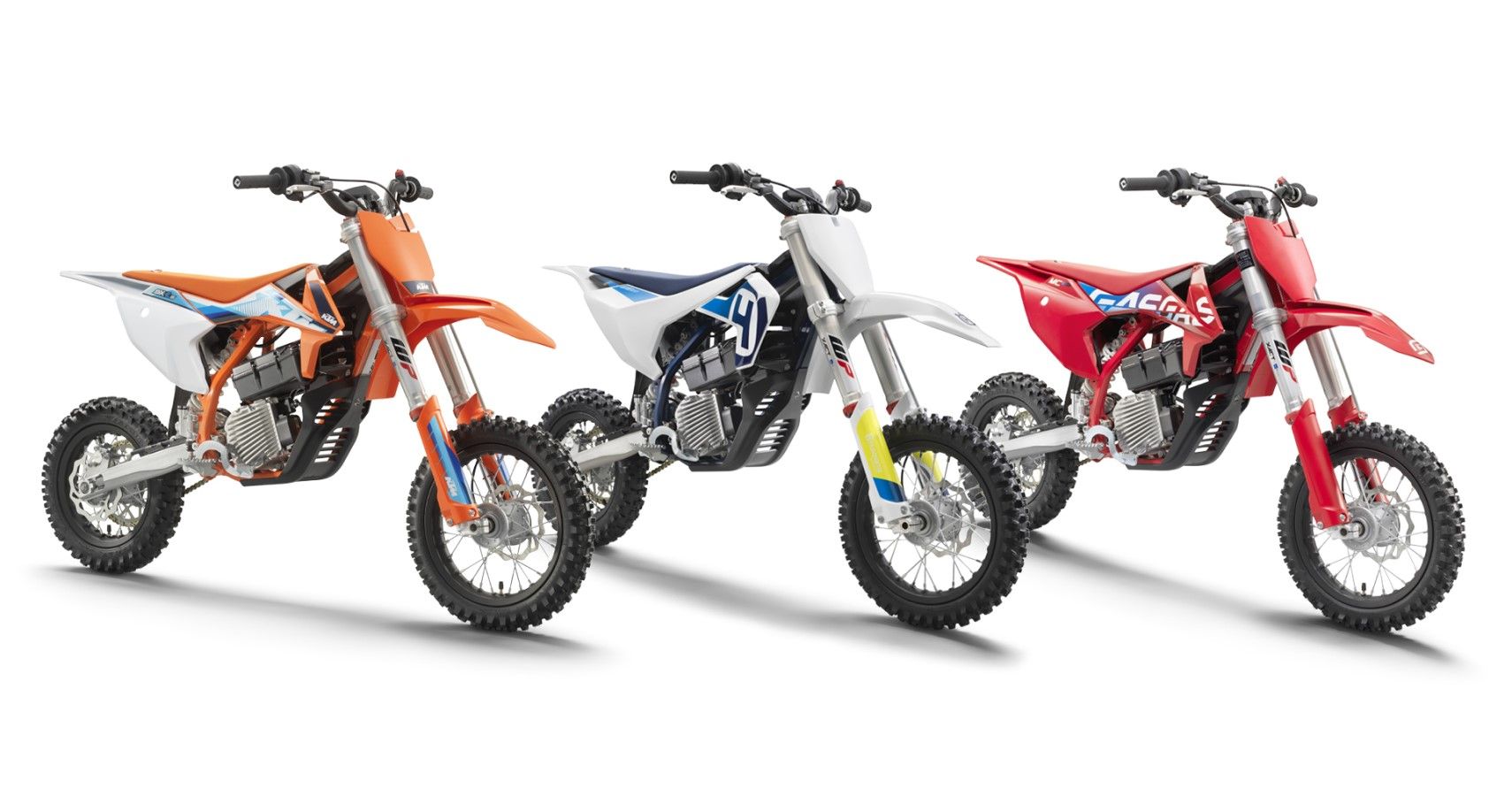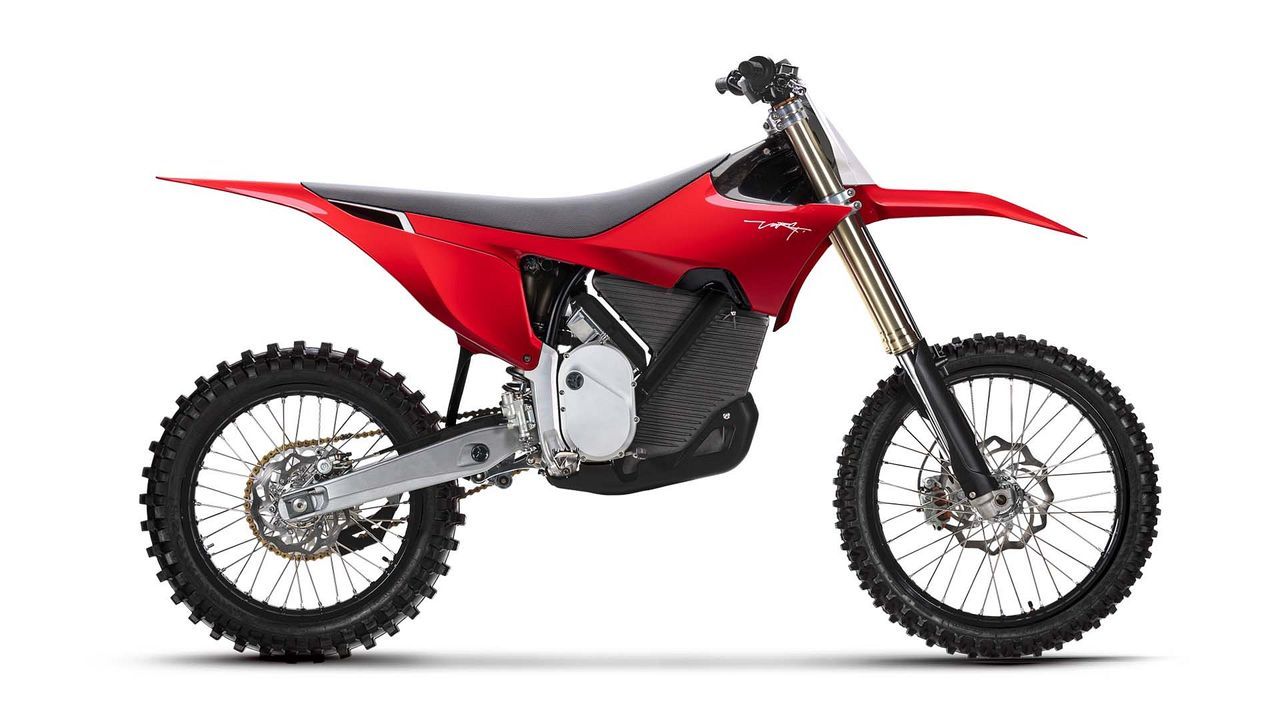Much fuss has been made about the oncoming electric vehicle revolution, and the offroad motorcycle segment is no exception. From the debut of the now-defunct Alta Redshift in 2016 to the recent media mayhem around the now-postponed Stark Future VARG, innovation-minded moto enthusiasts have repeatedly declared full-size fuel machines’ days numbered. In reality, so far, real big bike innovation has only hit dealer floors in the form of capable internal-combusters like the smartphone-tuned 2023 Yamaha YZ450F and the EFI two-stroke 2023 KTM 300 XC. If it’s the name-brand electric-power you crave, your choices are limited to the mini-cycle section of the shop for the time being.
Electric Minis Have Created A New Entry-Level
Perhaps the biggest real impact on the electric moto market has been the astounding adoption of the STACYC line of electric balance bikes among the offroad mini masses. There isn’t a cul-de-sac, suburban skatepark or motocross track parking lot without one of these little battery-bikes zooming around, or at least inducing a frantic search for the elusive charger. The particularly picayune 12-inch STACYC 12eDRIVE, with an MSRP of $799, has been just the ticket for parents eager to get their kiddos as young as three years old on a powered two-wheeler. Gone are the days that kids languish on creaky bicycle pedals and wobbly training wheels until earning the right to commandeer the heavy, dated, yet nonetheless beloved Yamaha PW50 or comparable Honda product on their fourth or fifth birthday. As in many athletic endeavors, kids are now coming to the sport of motocross earlier and readier than ever, thanks, in large part, to STACYC. Local motocross promoters have even created dedicated STACYC classes to serve this new generation.
STACYC vs. Stasis
There is a reason that electric innovation has been largely small-scale: the bar is set much, much lower for the mini classes than it is for rides rocking big wheels. The aforementioned PW50 has not been substantially updated in its design since 1981. Likewise, the Honda Z50R (1979-1999), XR50 (2000-2002) and CRF50R (2003-present) has only superficially changed form over three generations. In comparison, enduro and motocross-oriented full-size models (typically defined by a 21-inch front wheel and 18 or 19-inch rear) from the major brands undergo substantial, if not comprehensive redesigns on approximately four-year cycles. Current combustion cycle customers demand electric starting, user-tunable EFI and superb suspension travel turned up to 11 (inches). Their demands are presently being met, and often exceeded, from a performance perspective.
Small Electric Shows We Can All Get Along
Racing presents the ultimate test for machines. This truth permeates off-road motorcycling beyond its utility, with the average middle-aged throttle jockey going through magazine reviews with a fine-toothed comb looking for shaved ounces and optimized ergonomics that will put them on the exact right next bike (and hopefully the 40+ B-class podium). The standards are unrealistically high. This makes the rapid and wide integration of models like the 2023 KTM SX-E 5 into the kids’ racing ranks all the more impressive, as race dads are doubly performance-minded when equipping their miniature racing successors. The KTM SX-E 5 (as well as brand-family siblings the Husqvarna EE 5 and GASGAS MC-E 5) has found such a foothold in the world of racing that it led to the creation of a dedicated class at the world’s largest amateur motocross event, the Monster Energy Amateur Motocross Championship at Loretta Lynn’s beginning in 2020. While these models lack swappable batteries and can induce range anxiety once riders venture off the track and into longer trails, their value proposition has clearly struck a chord with moto families, even at a steep $5,499 MSRP. Despite the astounding success of the electric kids racing classes, it is noteworthy that these bikes are often pitted next to a similar gas-powered model, as many racers still enter both electric and traditional classes. This may well reflect the early stages of a transition to all-electric motorcycling, but for now it is a successful hybrid model.
Electric Big Bikes Face Fundamental Resistance
The only substantial entries in the electric big bike category were offered by Alta and were generally well-received in reviews during the brand’s few short years in the market. Models such as the 2019 Alta Redshift EXR were often reported by the media to compete with modern motocross bikes in terms of speed and handling – an impressive feat in itself, especially in a segment that has been refined and re-refined for decades. Even that model, however, had glaring question marks for real-world riding and racing (and, therefore, for purchase). Charging, for example, was spec’d at 1.5 hours at 240v or three hours at the United States standard of 120v. Compare that to quick-fill fuel systems commonly used in desert and enduro racing, and the first red flag appears. Racers hate red flags.
Both the Alta Redshift models and the Stark Future VARG integrate their batteries as stressed frame members, eliminating the option of realistically swapping batteries at pit stops. Even sub-$1,000 models from STACYC allow parents to swap batteries as easily as they do on a cordless drill. This need to swap power stores is so obvious, it suggests that there are fundamental reasons the feature was omitted by the otherwise Tesla-inspired models from Alta and Stark Future. Whether the constraint is weight, electrical connection quality, or cost, the one-shot range (or associated “range anxiety”) presents a deal breaker for anyone adventuring on hours-long trail tours or putting in long practice days at the motocross track. These apparent engineering challenges are not all that big-bike-electric is up against. The recent announcement to thousands of deposit-paying customers of shipping delays from Stark Future for the VARG suggests that simply delivering, let alone winning races on these design-challenged models is currently more proposition than promise. For now.
Electric Big Bikes: Shockingly Capable, Sadly Unavailable
Only would-be early-adopters are complaining in the big-bike ranks about a lack of electric options. Most riders and racers are too busy deciding between high-performance, petrol-powered models offered by Yamaha, Kawasaki, Honda, and KTM. Overall, the full-size dirt segment is replete with advanced bikes that satisfy customers across a variety of needs. On the high-performance electric side of offroad motorcycling, however, only the KTM AG group have actually put bikes on dealer floors, and only for riders with an inseam 24 inches or less. Time will tell if the October 2022 announcement of delivery delays of a few months for the Stark VARG reveal fundamental challenges of developing competitive big electric bikes, or simply the supply chain challenges faced by vehicle manufacturers across categories. Regardless, at the end of the race day, it is up to players like Stark Future to show, not simply tell. Manufacturers have a few years yet until the electron-driven moto kids of today, addicted to quiet, instantaneous torque, threaten to leave dealers in a huff if suitable electric race machines aren’t ready to load in their Cybertruck.

.jpg)



